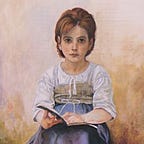A Game to Understand Place Value
Here, I want to show a very simple game that is very useful for children to understand place value. For this game, you need 10-base materials (cubes for the units and rods for the tens, as shown in the pictures below), a die, and to draw a 10 cm x 10 cm squares on centimetre paper. The idea is that each player throws the die at their respective turns, takes the corresponding number of cubes, and places them on the square, starting from the left bottom corner and going up. We could say the first player who reaches 100 is the winner, but it’s actually unnecessary to spell it out as children will see it anyway as a race (can it be that they’re conditioned?).
So, in the picture below, the player has accumulated 8 cubes and they have just rolled the die, which displays a 3 on the top: they need to take 3 cubes and add them to the present 8.
It gives this:
and (possibly) counting 8, 9, 10, 11, the player has found they have now 11. At this stage, we can say “oh look, the first column is full, so you know what?, we’ll exchange it against a ten since it’s exactly the same value. A ten is the same value as 10 ones.”. We then get this:
We need here to make the link between the number 11 shown here as one ten (“one yellow”) and one one (“one green”) and how it is written in numbers: the first one is the number of tens (the number of yellow rods) and the second one is the number of ones (the number of green cubes). Of course 11 is not the best number because it has the same number of tens and ones, but the message needs anyway to be repeated for a while with any new number they get. We can also show a number modelled with rods and cubes and ask the pupil(s) what number is shown, or, inversely, ask them to model with rods and cubes any number between 1 and 99.
For some children, this game is too challenging at first because they still struggle to make the link between the name of a number and how it is written (with symbols). Especially for the numbers above 10. So, with twelve for instance, they know twelve when they count between one and twenty, but they don’t seem to link it with ‘12’ in their head. In that case, I use first the following scaffolding:
This scaffolding removes some of their workload, so that they can focus on the concept of place value. I also tell them that the names of the first teen numbers are not very logical; they should be called “onety-one”, “onety-two”, “onety-three”, etc., linking with one yellow ten and one, two, three, etc. green ones, and point to the fact that in thirteen, we already somehow recognise three from ‘thir’ and ‘teen’ means one ten. And fourteen, fifteen, etc. are then easier. Once they have got over this barrier, I remove the scaffold and use the blank square.
We can start this game with a 6-sided die to deal with small numbers first. After a while, it’s nice to use 10-sided die to realise how adding 10 is an easy game. It’s simply adding a yellow rod! And so, for instance, 17 becomes 27 — no need to count in ones. Also, it is important to stress that e.g. 17 means one ten and 7 ones, so we have 17 = 10 + 7.
Once the children have understood our place value system, we can use this way of modelling numbers in a square with rods and cubes to think of subtracting as finding the missing number in an addition. For instance: “What number do I need to add to 76 to get 80?”
With this question, children will realise (if they use the square) that the answer is given by the empty space in the eighth column. At that point, we can then ask a further question, “And how many more do we need to get 100?” Subtraction is challenging and thinking of it in this way is very helpful to many children.
